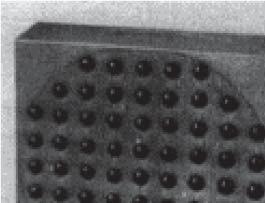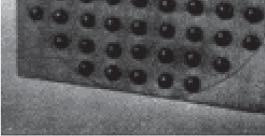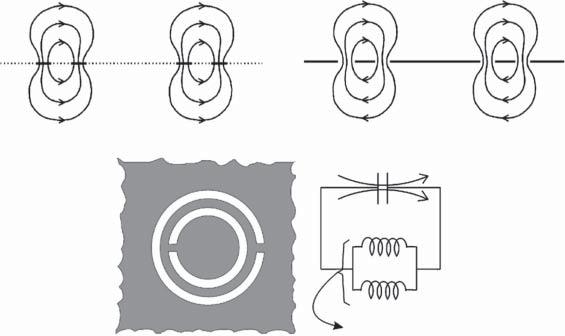High Power Microwave Sources and Technologies Using Metamaterials 1st Edition John W.
Luginsland (Editor)
Visit to download the full and correct content document: https://ebookmass.com/product/high-power-microwave-sources-and-technologies-usi ng-metamaterials-1st-edition-john-w-luginsland-editor/
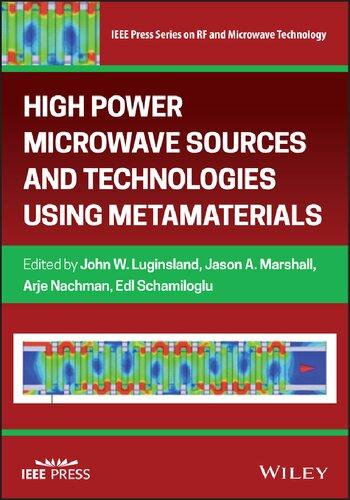
More products digital (pdf, epub, mobi) instant download maybe you interests ...
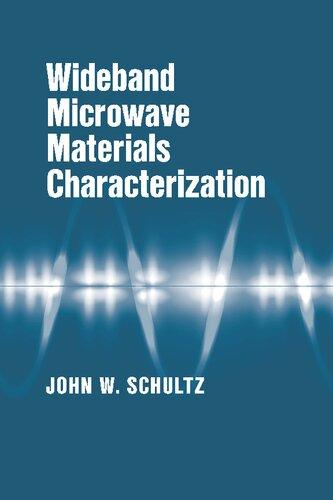
Wideband Microwave Materials Characterization John W. Schultz
https://ebookmass.com/product/wideband-microwave-materialscharacterization-john-w-schultz/
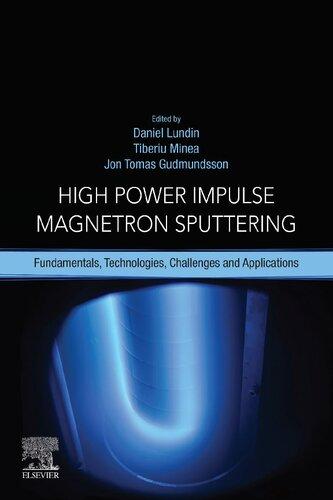
High Power Impulse Magnetron Sputtering: Fundamentals, Technologies, Challenges and Applications 1st Edition Daniel Lundin
https://ebookmass.com/product/high-power-impulse-magnetronsputtering-fundamentals-technologies-challenges-andapplications-1st-edition-daniel-lundin/

The load-pull method of RF and microwave power amplifier design 1st Edition John Sevic
https://ebookmass.com/product/the-load-pull-method-of-rf-andmicrowave-power-amplifier-design-1st-edition-john-sevic/
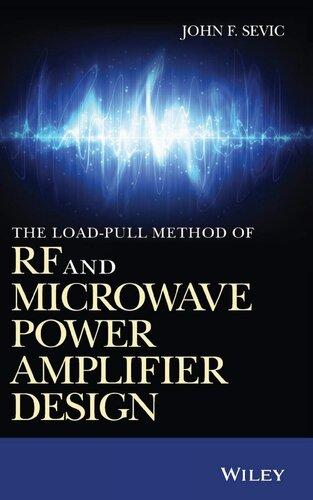
The Load-pull Method of RF and Microwave Power Amplifier Design John F. Sevic
https://ebookmass.com/product/the-load-pull-method-of-rf-andmicrowave-power-amplifier-design-john-f-sevic/

Using Predictive Analytics to Improve Healthcare Outcomes 1st Edition John W. Nelson
https://ebookmass.com/product/using-predictive-analytics-toimprove-healthcare-outcomes-1st-edition-john-w-nelson/
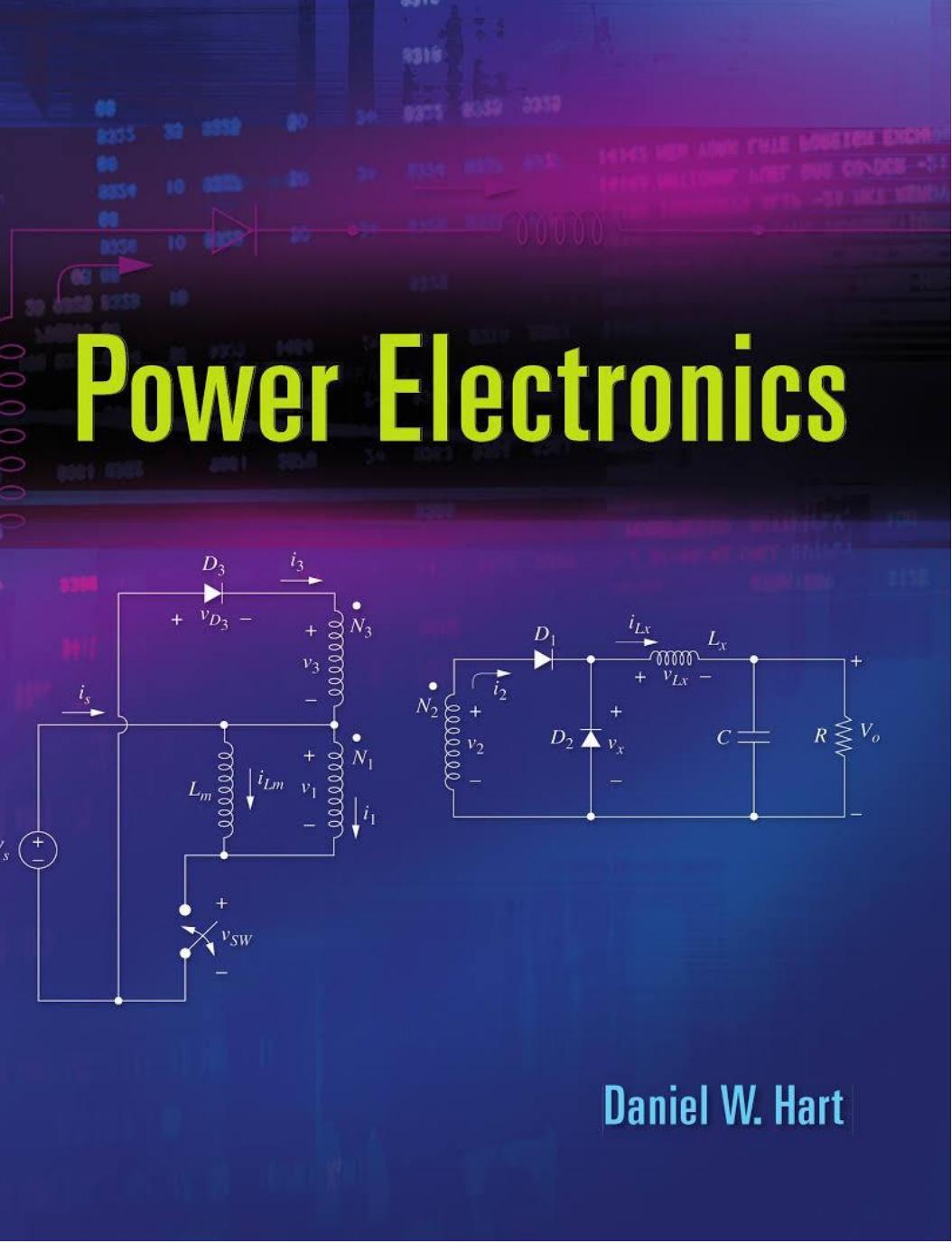
Power Electronics 1st Edition Daniel W. Hart
https://ebookmass.com/product/power-electronics-1st-editiondaniel-w-hart/
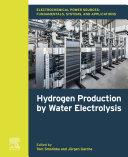
Electrochemical Power Sources: Fundamentals, Systems, and Applications Tom Smolinka
https://ebookmass.com/product/electrochemical-power-sourcesfundamentals-systems-and-applications-tom-smolinka/

The High Stakes Rescue: A K9 Handler Romance (Disaster City Search and Rescue, Book 29) 1st Edition Jenna Brandt
https://ebookmass.com/product/the-high-stakes-rescuea-k9-handler-romance-disaster-city-search-and-rescue-book-29-1stedition-jenna-brandt/
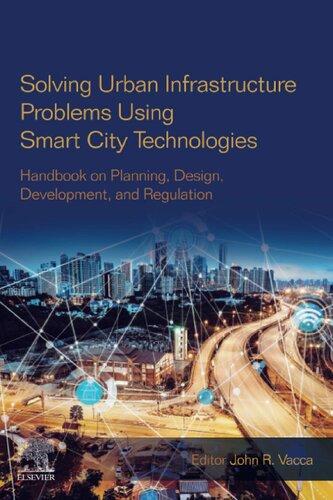
Solving Urban Infrastructure Problems Using Smart City Technologies: Handbook on Planning, Design, Development, and Regulation 1st Edition John R. Vacca
https://ebookmass.com/product/solving-urban-infrastructureproblems-using-smart-city-technologies-handbook-on-planningdesign-development-and-regulation-1st-edition-john-r-vacca/

HighPowerMicrowaveSourcesandTechnologiesUsingMetamaterials
JónAtliBenediktsson AnjanBose DavidAlanGrier ElyaB.Joffe
IEEEPress
445HoesLane Piscataway,NJ08854
IEEEPressEditorialBoard EkramHossain, EditorinChief
XiaoouLi LianYong AndreasMolisch SaeidNahavandi
JeffreyReed DiomidisSpinellis SarahSpurgeon AhmetMuratTekalp
HighPowerMicrowaveSourcesandTechnologies UsingMetamaterials
Editedby
JohnLuginsland ConfluentSciences,LLC Ithaca,NewYork
JasonA.Marshall NavalResearchLaboratory Washington,DC
ArjeNachman
AirForceOfficeofScientificResearch Arlington,VA
EdlSchamiloglu UniversityofNewMexico Albuquerque,NM
IEEEPressSeriesonRFandMicrowaveTechnology
Copyright©2022byTheInstituteofElectricalandElectronicsEngineers,Inc.Allrightsreserved.
PublishedbyJohnWiley&Sons,Inc.,Hoboken,NewJersey.
PublishedsimultaneouslyinCanada.
Nopartofthispublicationmaybereproduced,storedinaretrievalsystem,ortransmittedinanyformorbyany means,electronic,mechanical,photocopying,recording,scanning,orotherwise,exceptaspermittedunderSection 107or108ofthe1976UnitedStatesCopyrightAct,withouteitherthepriorwrittenpermissionofthePublisher,or authorizationthroughpaymentoftheappropriateper-copyfeetotheCopyrightClearanceCenter,Inc.,222 RosewoodDrive,Danvers,MA01923,(978)750-8400,fax(978)750-4470,oronthewebatwww.copyright.com. RequeststothePublisherforpermissionshouldbeaddressedtothePermissionsDepartment,JohnWiley&Sons, Inc.,111RiverStreet,Hoboken,NJ07030,(201)748-6011,fax(201)748-6008,oronlineathttp://www.wiley.com/ go/permission.
LimitofLiability/DisclaimerofWarranty:Whilethepublisherandauthorhaveusedtheirbesteffortsinpreparing thisbook,theymakenorepresentationsorwarrantieswithrespecttotheaccuracyorcompletenessofthecontents ofthisbookandspecificallydisclaimanyimpliedwarrantiesofmerchantabilityorfitnessforaparticularpurpose. Nowarrantymaybecreatedorextendedbysalesrepresentativesorwrittensalesmaterials.Theadviceandstrategies containedhereinmaynotbesuitableforyoursituation.Youshouldconsultwithaprofessionalwhereappropriate. Further,readersshouldbeawarethatwebsiteslistedinthisworkmayhavechangedordisappearedbetweenwhen thisworkwaswrittenandwhenitisread.Neitherthepublishernorauthorshallbeliableforanylossofprofitor anyothercommercialdamages,includingbutnotlimitedtospecial,incidental,consequential,orotherdamages.
Forgeneralinformationonourotherproductsandservicesorfortechnicalsupport,pleasecontactourCustomer CareDepartmentwithintheUnitedStatesat(800)762-2974,outsidetheUnitedStatesat(317)572-3993orfax(317) 572-4002.
Wileyalsopublishesitsbooksinavarietyofelectronicformats.Somecontentthatappearsinprintmaynotbe availableinelectronicformats.FormoreinformationaboutWileyproducts,visitourwebsiteatwww.wiley.com.
LibraryofCongressCataloging-in-PublicationDataappliedfor : Hardback:9781119384441
CoverDesign:Wiley
CoverImage:©SaritaPrasad&SabahattinC.Yurt
Setin9.5/12.5ptSTIXTwoTextbyStraive,Chennai,India 10987654321
Contents
EditorBiographies xi
ListofContributors xiii
Foreword xvii
Preface xix
1IntroductionandOverviewoftheBook 1
RebeccaSeviour
1.1Introduction 1
1.2ElectromagneticMaterials 2
1.3Effective-MediaTheory 4
1.4HistoryofEffectiveMaterials 4
1.4.1ArtificialDielectrics 4
1.4.2ArtificialMagneticMedia 5
1.5DoubleNegativeMedia 7
1.5.1DNGRealization 9
1.6BackwardWavePropagation 9
1.7Dispersion 10
1.8ParameterRetrieval 12
1.9Loss 13
1.10Summary 14 References 14
2MultitransmissionLineModelforSlowWaveStructuresInteractingwith ElectronBeamsandMultimodeSynchronization 17 AhmedF.Abdelshafy,MohamedA.K.Othman,AlexanderFigotin,andFilippoCapolino
2.1Introduction 17
2.2TransmissionLines:APreview 18
2.2.1MultipleTransmissionLineModel 18
2.3ModelingofWaveguidePropagationUsingtheEquivalentTransmission LineModel 20
2.3.1PropagationinUniformWaveguides 21
2.3.2PropagationinPeriodicWaveguides 22
2.3.3Floquet’sTheorem 24
2.4PierceTheoryandtheImportanceofTransmissionLineModel 25
2.5GeneralizedPierceModelforMultimodalSlowWaveStructures 28
2.5.1MultitransmissionLineFormulationWithoutElectronBeam:“ColdSWS” 28
2.5.2MultitransmissionLineInteractingwithanElectronBeam:“HotSWS” 30
2.6PeriodicSlow-WaveStructureandTransferMatrixMethod 32
2.7MultipleDegenerateModesSynchronizedwiththeElectronBeam 34
2.7.1MultimodeDegeneracyCondition 34
2.7.2DegenerateBandEdge(DBE) 34
2.7.3SuperSynchronization 35
2.7.4ComplexDispersionCharacteristicsofaPeriodicMTLInteractingwith anElectronBeam 38
2.8GiantAmplificationAssociatedtoMultimodeSynchronization 39
2.9LowStartingElectronBeamCurrentinMultimodeSynchronization-Based Oscillators 42
2.10SWSMadebyDualNonidenticalCoupledTransmissionLinesInsideaWaveguide 46
2.10.1DispersionEngineeringUsingDualNonidenticalPairofTLs 47
2.10.2BWODesignUsingButterflyStructure 49
2.11Three-EigenmodeSuperSynchronization:ApplicationsinAmplifiers 50
2.12Summary 53 References 54
3GeneralizedPierceModelfromtheLagrangian 57 AlexanderFigotinandGuillermoReyes
3.1Introduction 57
3.2MainResults 59
3.2.1LagrangianStructureoftheStandardPierceModel 59
3.2.2MultipleTransmissionLines 60
3.2.3TheAmplificationMechanismandNegativePotentialEnergy 60
3.2.4BeamInstabilityandDegenerateBeamLagrangian 61
3.2.5FullCharacterizationoftheExistenceofanAmplifyingRegime 61
3.2.6EnergyConservationandFluxes 62
3.2.7NegativePotentialEnergyandGeneralGainMedia 62
3.3Pierce’sModel 63
3.4LagrangianFormulationofPierce’sModel 65
3.4.1TheLagrangian 65
3.4.2GeneralizationtoMultipleTransmissionLines 67
3.5HamiltonianStructureoftheMTLBSystem 68
3.5.1HamiltonianFormsforQuadraticLagrangianDensities 68
3.5.2TheMTLBSystem 70
3.6TheBeamasaSourceofAmplification:TheRoleofInstability 71
3.6.1SpaceChargeWaveDynamics:EigenmodesandStabilityIssues 71
3.7AmplificationfortheHomogeneousCase 74
3.7.1AsymptoticBehavioroftheAmplificationFactoras �� → 0andas �� → ∞ 77
3.8EnergyConservationandTransfer 77
3.8.1EnergyExchangeBetweenSubsystems 78
3.9ThePierceModelRevisited 80
3.10MathematicalSubjects 82
3.10.1EnergyConservationviaNoether’sTheorem 82
3.10.2EnergyExchangeBetweenSubsystems 83
3.11Summary 84 References 84
4DispersionEngineeringforSlow-WaveStructureDesign 87 UsheChipengo,NiruK.Nahar,JohnL.Volakis,AlanD.R.Phelps,andAdrianW.Cross
4.1Introduction 87
4.2MetamaterialComplementarySplitRingResonator-BasedSlow-WaveStructure 88
4.2.1ComplementarySplitRingResonatorPlate-LoadedMetamaterialWaveguide: Design 89
4.2.2ComplementarySplitRingResonatorPlate-LoadedMetamaterialWaveguide: FabricationandColdTest 92
4.3BroadsideCoupledSplitRingResonator-BasedMetamaterialSlow-WaveStructure 94
4.3.1Broadside-CoupledSplitRing-LoadedMetamaterialWaveguide:Design 94
4.3.2Broadside-CoupledSplitRing-LoadedMetamaterialWaveguide:Fabricationand ColdTest 97
4.4IrisRing-LoadedWaveguideSlow-WaveStructurewithaDegenerateBandEdge 97
4.4.1IrisLoaded-DBESlow-WaveStructure:Design 100
4.4.2Iris-LoadedDBESlow-WaveStructure:FabricationandColdTest 102
4.5Two-DimensionalPeriodicSurfaceLattice-BasedSlow-WaveStructure 102
4.5.1Two-DimensionalPeriodicSurfaceLatticeSlow-WaveStructure:Design 104
4.5.2Two-DimensionalPeriodicSurfaceLatticeSlow-WaveStructure:Fabricationand ColdTest 106
4.6CurvedRing-BarSlow-WaveStructureforHigh-PowerTravelingWaveTube Amplifiers 107
4.6.1CurvedRing-BarSlow-WaveStructure:Design 108
4.6.2CurvedRing-BarSlow-WaveStructure:FabricationandColdTesting 112
4.7ACorrugatedCylindricalSlow-WaveStructurewithCavityRecessionsandMetallic RingInsertions 114
4.7.1DesignofaCorrugatedCylindricalSlow-WaveStructurewithCavityRecessionsand MetallicRingInsertions 116
4.7.2FabricationandColdtestingofaHomogeneous,CorrugatedCylindricalSlow-Wave StructurewithCavityRecessionsandMetallicRingInsertions 119
4.7.3InhomogeneousSWSdesignbasedontheCorrugatedCylindricalSWSwithCavity RecessionsandMetallicRingInsertions:FabricationandColdTesting 121
4.8Summary 123 References 123
5PerturbationAnalysisofMaxwell’sEquations 127
RobertLipton,AnthonyPolizzi,andLokendraThakur
5.1Introduction 127
5.2GainfromFloatingInteractionStructures 129
5.2.1AnisotropicEffectivePropertiesandtheDispersionRelation 130
5.2.2APierce-LikeApproachtoDispersion 133
5.3GainfromGroundedInteractionStructures 133
5.3.1ModelDescription 134
5.3.2PhysicsofWaveguidesandMaxwell’sEquations 134
5.3.3PerturbationSeriesforLeadingOrderDispersiveBehavior 137
5.3.4LeadingOrderTheoryofGainforHybridSpaceChargeModesforaCorrugatedSWS withBeam 138
5.3.4.1HybridModesinBeam 140
5.3.4.2ImpedanceCondition 141
5.3.4.3ColdStructure 141
5.3.4.4PierceTheory 142
5.4ElectrodynamicsInsideaFinite-LengthTWT:TransmissionLineModel 142
5.4.1SolutionoftheTransmissionLineApproximation 145
5.4.2DiscussionofResults 145
5.5CorrugatedOscillators 148
5.5.1OscillatorGeometry 148
5.5.2SolutionsofMaxwell’sEquationsintheOscillator 149
5.5.3PerturbationExpansions 151
5.5.4LeadingOrderTheory:TheSubwavelengthLimitoftheAsymptoticExpansions 151
5.5.5DispersionRelationfor ���� 152
5.6Summary 154 References 154
6SimilarityofthePropertiesofConventionalPeriodicStructureswith MetamaterialSlowWaveStructures 157 SabahattinYurt,EdlSchamiloglu,RobertLipton,AnthonyPolizzi,andLokendraThakur
6.1Introduction 157
6.2Motivation 157
6.3Observations 159
6.3.1AppearanceofNegativeDispersionforLow-OrderWaves 159
6.3.2EvolutionofWaveDispersioninUniformPeriodicSystemswithIncreasing CorrugationDepth 160
6.3.2.1SWSwithSinusoidalCorrugations 161
6.3.2.2SWSwithRectangularCorrugations 164
6.4AnalysisofMetamaterialSurfacesfromPerfectlyConductingSubwavelength Corrugations 168
6.4.1Approach 169
6.4.2ModelDescription 169
6.4.2.1PhysicsofWaveguidesandMaxwell’sEquations 170
6.4.2.2Two-ScaleAsymptoticExpansions 172
6.4.2.3LeadingOrderTheory:TheSubwavelengthLimitoftheAsymptoticExpansions 172
6.4.2.4NonlocalSurfaceImpedanceFormulationforTimeHarmonicFields 173
6.4.2.5EffectiveSurfaceImpedanceforHybridModesinCircularWaveguides 174
6.4.3MetamaterialsandCorrugationsasMicroresonators 175
6.4.4ControllingNegativeDispersionandPowerFlowwithCorrugationDepth 177
6.4.5Summary 182 References 182
7GroupTheoryApproachforDesigningMTMStructuresforHigh-Power MicrowaveDevices 185
HamideSeidfaraji,ChristosChristodoulou,andEdlSchamiloglu
7.1GroupTheoryBackground 185
7.1.1SymmetryElements 186
7.1.2SymmetryPointGroup 187
7.1.3CharacterTable 187
7.2MTMAnalysisUsingGroupTheory 188
7.2.1SplitRingResonatorBehaviorAnalysisUsingGroupTheory 189
7.2.1.1PrinciplesofGroupTheory 189
7.2.1.2BasisCurrentinSSRs 191
7.3InverseProblem-SolvingUsingGroupTheory 194
7.4DesigninganIdealMTM 195
7.5ProposedNewStructureUsingGroupTheory 195
7.6DesignofIsotropicNegativeIndexMaterial 197
7.7MultibeamBackwardWaveOscillatorDesignusingMTMandGroupTheory 199
7.7.1IntroductionandMotivation 199
7.7.2MetamaterialDesign 200
7.7.3TheoryofElectronBeamInteractionwithMetamaterialWaveguide 203
7.7.4HotTestParticle-in-CellSimulations 204
7.8Particle-in-CellSimulations 204
7.9Efficiency 207
7.10Summary 208 References 209
8Time-DomainBehavioroftheEvolutionofElectromagneticFieldsin MetamaterialStructures 211
MarkGilmore,TylerWynkoop,andMohamedAzizHmaidi
8.1Introduction 211
8.2ExperimentalObservations 212
8.2.1BandstopFilter(BSF)System 215
8.2.2BandpassFilter(BPF)System 217
8.3NumericalSimulations 224
8.3.1BandstopSystem(BSF) 225
8.3.2BandpassFilterSystem(BPF) 226
8.3.3Experiment-ModelComparison 227
8.4AttemptsataLinearCircuitModel 229 References 230
9MetamaterialSurvivabilityintheHigh-PowerMicrowaveEnvironment 233 RebeccaSeviour
9.1Introduction 233
9.2SplitRingResonatorLoss 234
x Contents
9.3CSRRLoss 237
9.4ArtificialMaterialLoss 239
9.5Disorder 241
9.6Summary 242 References 244
10ExperimentalHotTestofBeam/WaveInteractionswithMetamaterialSlow WaveStructures 245
MichaelA.Shapiro,JasonS.Hummelt,XueyingLu,andRichardJ.Temkin
10.1First-StageExperimentatMIT 246
10.1.1MetamaterialStructure 246
10.1.2ExperimentalResults 247
10.1.3SummaryofFirst-StageExperiments 251
10.2Second-StageExperimentatMIT 251
10.3MetamaterialStructurewithReverseSymmetry 252
10.4ExperimentalResultsonHigh-PowerGeneration 255
10.5FrequencyMeasurementinHotTest 257
10.6SteeringCoilControl 262
10.7UniversityofNewMexico/UniversityofCaliforniaIrvineCollaborationonaHigh PowerMetamaterialCherenkovOscillator 264
10.8Summary 264 References 265
11ConclusionsandFutureDirections 267
JohnLuginsland,JasonA.Marshall,ArjeNachman,andEdlSchamiloglu References 268
Index 271
EditorBiographies
JohnLuginsland –Dr.JohnLuginslandisaseniorscientistatConfluentSciences,LLCandan adjunctprofessoratMichiganStateUniversity.Previously,heworkedatAFOSRservingasthe plasmaphysicsandlasersandopticsprogramofficer,aswellasinvarioustechnicalleadership roles.Additionally,heworkedforSAICandNumerEx,aswellasthedirectedenergydirectorateof theAirForceResearchLaboratory(AFRL).HeisafellowoftheIEEEandAFRL.Hereceivedhis BSE,MSE.,andPhDinnuclearengineeringfromtheUniversityofMichiganin1992,1994,and 1996,respectively.
JasonA.Marshall –Dr.JasonA.Marshallistheassociatesuperintendent,PlasmaPhysics Division,NavalResearchLaboratory.Priortothis,hewasaprincipalscientistwiththeAir ForceOfficeofScientificResearchresponsibleformanagementandexecutionoftheAirForce basicresearchinvestmentsinPlasmaandElectro-energeticPhysics.HereceivedBSdegreesin anthropologyandchemistryfromEasternNewMexicoUniversityin1994and1995,respectively; anMSdegreeinchemistryfromWashingtonStateUniversityin1998;andaPhDinchemical physicsfromWashingtonStateUniversityin2002.
ArjeNachman –Dr.ArjeNachmanistheprogramofficerforelectromagneticsatAFOSR.He hasworkedatAFOSRsince1985.Beforethat,hewasonthemathematicsfacultyofTexasA&M andOldDominionUniversity,andaseniorscientistatSouthwestResearchInstitute(SwRI).Dr. NachmanreceivedaBSincomputerscienceandappliedmathematicsin1968fromWashington University(St.Louis)andaPhDinMathematicsin1973fromNYU.
EdlSchamiloglu –Dr.EdlSchamilogluisadistinguishedprofessorofelectricalandcomputer engineeringattheUniversityofNewMexico,wherehealsoservesasassociatedeanforresearch andinnovationintheSchoolofEngineering,andspecialassistanttotheProvostforLaboratory Relations.HeisafellowoftheIEEEandtheAmericanPhysicalSociety.HereceivedhisBSand MSfromColumbiaUniversityin1979and1981,respectively,andhisPhDfromCornellUniversity in1988.
ListofContributors
AhmedF.Abdelshafy DepartmentofElectricalEngineeringand ComputerScience,TheUniversityof CaliforniaatIrvine Irvine,CA USA
FilippoCapolino DepartmentofElectricalEngineeringand ComputerScience,TheUniversityof CaliforniaatIrvine Irvine,CA USA
UsheChipengo AnsysInc. Canonsburg,PA USA
ChristosChristodoulou DepartmentofElectricalandComputer Engineering,UniversityofNewMexico Albuquerque,NM USA
AdrianW.Cross DepartmentofPhysics UniversityofStrathclyde Glasgow,Lanarkshire UK
AlexanderFigotin DepartmentofMathematics,TheUniversityof CaliforniaatIrvine Irvine,CA USA
MarkGilmore DepartmentofElectricalandComputer Engineering,UniversityofNewMexico Albuquerque,NM USA
MohamedAzizHmaidi Luxoft
FarmingtonHills,MI USA
JasonS.Hummelt DiamondFoundry SantaClara,CA USA
RobertLipton DepartmentofMathematics,LouisianaState University
BatonRouge,LA USA
XueyingLu NorthernIllinoisUniversity DeKalb,IL USA
JohnLuginsland ConfluentSciences,LLC Albuquerque,NM USA
JasonA.Marshall NavalResearchLaboratory Washington,DC USA
ArjeNachman AirForceOfficeofScientificResearch Arlington,VA USA
NiruK.Nahar ElectroscienceLaboratory,TheOhioState University Columbus,OH USA
MohamedA.K.Othman SLACNationalAcceleratorLaboratory, StanfordUniversity MenloPark,CA USA
AlanD.R.Phelps DepartmentofPhysics UniversityofStrathclyde Glasgow,Lanarkshire UK
AnthonyPolizzi SynovusFinancial Columbus,GA USA
GuillermoReyes DepartmentofMathematics,Universityof SouthernCalifornia LosAngeles,CA USA
EdlSchamiloglu DepartmentofElectricalandComputer Engineering,UniversityofNewMexico Albuquerque,NM USA
HamideSeidfaraji MicrosoftCorporation Kirkland,WA USA
RebeccaSeviour SchoolofComputingandEngineering, UniversityofHuddersfield Huddersfield UK
MichaelA.Shapiro PlasmaScienceandFusionCenter,MIT Cambridge,MA USA
RichardJ.Temkin PlasmaScienceandFusionCenter,MIT Cambridge,MA USA
LokendraThakur MIT-HarvardBroadInstitute Cambridge,MA USA
JohnL.Volakis
CollegeofEngineeringandComputing, FloridaInternationalUniversity Miami,FL
USA
TylerWynkoop BAESystems,Inc. Minneapolis,MN USA
SabahattinYurt
QualcommTechnologies,Inc.
SanDiego,CA USA
Foreword
Sinceitsinceptionin1985,theDepartmentofDefense’sMultidisciplinaryUniversityResearchInitiative(MURI)programhasconvenedteamsofinvestigatorswiththehopethatcollectiveinsights drawnfromresearchacrossmultipledisciplinescouldfacilitatetheadvancementofnewlyemergingtechnologiesandaddressthedepartment’suniqueproblemsets.Developedincollaboration betweenthemilitaryservicesandtheOfficeoftheSecretaryofDefense,MURItopicsandthe teamschosentoexecutetheresearchrepresentadedicatedsourceofinnovationforscienceand technologysolutionstohardnationalsecurityproblems.Thesehighlycompetitiveawardscomplementandaugmentthetraditionalbasicresearchinitiativesthatsupportsingle-investigatorgrants withresearchprogramsthatcandrawonawiderangeofresearchersanddisciplines.Furthermore, longerperiodsofperformanceallowtheseMURIstostartnewresearchareasattheintersectionof multiplefieldsofstudy.Thecombinationofsignificantandsustainedsupportinareascriticalto NationalSecurityandtheDepartmentofDefense’smissionprovidethepotentialforgamechanging advancementinscienceandtechnology.
Thisvolume,editedbyDrs.JohnLuginsland,JasonA.Marshall,ArjeNachman,andEdl Schamiloglu,summarizestheaccomplishmentsoftheFY12MURIconsortium,whichwas awardedanAFOSRgrantonTransformationalElectromagnetics.Drs.Luginsland,Marshall,and Nachman(AFOSR)wereprogramofficersforthisMURI,andDr.Schamiloglu(UniversityofNew Mexico)wastheconsortiumPI.TheotherPIsonthisMURIwereDr.RichardTemkin(MIT),Dr. JohnVolakis(TheOhioStateUniversityandtowardtheendFloridaInternationalUniversity), Dr.AlexanderFigotin(UCIrvine),andDr.RobertLipton(LouisianaStateUniversity).The contributorstothisvolumewerethefaculty,staff,andgraduatestudentsinvolvedinperforming theresearch.
ThesuccessofthisMURIisaresultofthehardworkandinternationallyrecognizedexpertiseofthesponsoredresearchers.Asaplasmaphysicistmyself,Icertainlyappreciatethechallengesinadvancingthestate-of-the-artindirectedenergymicrowavesources.Thefiveuniversities, guidedbytheMURI’sAdvisoryBoardwithmembersfromtheAirForceResearchLaboratory,Los AlamosNationalLaboratory,andindustry,haveadvancedtheunderstandingofanewgeneration ofdirectedenergymicrowavecapabilitythatintroducesmetamaterialsintotheirbeam-waveinteractionstructures.Conventionalmicrowavevacuumelectronicshasadvancedenormouslyfrom continuousresearchfornearlyacentury.Metamaterial-baseddeviceshavebeenexploredforless thanadecade,soonecanonlyimaginewhatadvanceswillberealizedinthefuture.
IcommendtheAFOSRprogramofficersforsuccessfullycreatingsuchaMURItopic,andI commendthePIandhisteamforsuccessfullyexecutingthisaward.Thisisanexampleofhow multidisciplinaryteamsaccelerateresearchthroughcross-fertilizationofideas.Sucheffortsalso hastenthetransitionofbasicresearchfindingstopracticalapplicationsand,importantly,trainthe
nextgenerationofthescienceandengineeringworkforceinareasofparticularimportancetothe U.S.DoD.
Insummary,Iamverypleasedtohavethisvolumeasanarchivalrecordofthissuccessful five-yeareffort.Theeditorshavedoneamasterfuljobofworkingwiththeresearcherstocollate thishugemassofvaluableinformationintoaconsistentwhole.Thisvolumeisawonderfulwayof disseminatingtheadvancesfromthisMURItonewstudents,andalsotopractitioners,inthefield seekingtounderstandhowmetamaterialscanbeexploitedtodesignanewgenerationofintense microwavesources.
BrendanB.Godfrey Director,AFOSR
2004–2010
BrendanB.Godfreyisretiredfromacareerofresearchmanagementingovernmentandindustry, mostrecentlyaspartoftheSeniorExecutiveService(SES).Heisafull-timevolunteer,notonlyprincipallyforIEEE-USA,butalsoforIEEE-NuclearandPlasmaSciencesSociety,theNationalAcademies, LawrenceBerkeleyNationalLaboratory,andArsLyricaHouston.Hehasledorganizationswithas manyas1500peopleandbudgetsaslargeasUS$500million.HewasdirectoroftheAirForceOffice ofScientificResearchfrom2004to2010.Hispersonalresearchcentersonintense-chargedparticle beams,high-powermicrowavesources,andcomputationalplasmamethods.HeisanIEEEFellow andAmericanPhysicalSocietyFellow,andholdsaPhDfromPrincetonUniversity.
Preface
Aristotleidentifiedadistinctionbetweennaturalandartificialthings.Heascribedthedifference tomotionandchange.Naturalthingshaveasourceofmotionorchangewithinthem.Artificial thingsdon’thaveanysourceofchangeinthem,sotheyneedanexternalcause.Inthisbook,we explorethechangeinartificialmaterialscausedbyhigh-powerelectromagneticradiation.
Thisbookpresentsasnapshotintimeofthestatusofresearchonhigh-powermicrowave(HPM) sourcesandtechnologiesusingmetamaterials circa 2021.Thefocusofthisbookisonresearchthat resultedfromanFY2012AirForceOfficeofScientificResearch(AFOSR)MultidisciplinaryUniversityResearchInitiative(MURI)awardonTransformationalElectromagneticsthatwasfunded foroverUS$7.5millionandforoverfiveyears.Theawardwasalsosupplementedwithsubstantial DefenseUniversityResearchInstrumentationProgram(DURIP)grants.ThisMURIawardbuilds ondecadesofAFOSRsupportforHPMresearch.TheexplorationofmetamaterialsessentiallydoublesthespaceofmaterialsthatcanbeexploitedinthedesignofHPMsources,aspacepreviously occupiedbyonlyconventionalmetals.
Oneoftheeditors(ES)wastheleadPrincipalInvestigator(PI)ontheawardandtheremaining editors(JL,JAM,andAN)servedasprogramofficersforpartoralloftheaward.
TheteamofuniversityresearcherswasledbytheUniversityofNewMexico(ES)andincluded MIT(RichardTemkin,PI),theOhioStateUniversity(JohnVolakis,PI),theUniversityofCaliforniaatIrvine(AlexFigotin,PI),andLouisianaStateUniversity(RobertLipton,PI).Thetitleof theirproposalwas InnovativeUseofMetamaterialsinConfining,Controlling,andRadiatingIntense MicrowavePulses.
SupportingthisMURIteamwerecollaboratorsattheAirForceResearchLaboratory’s(AFRL’s) DirectedEnergy(DE)Directorate(Dr.RobertE.Peterkin,ChiefScientistforAFRL’sDirectorateat thetime).Inaddition,anesteemedgroupofscientistsservedastheadvisoryboardforthisMURI, providingfeedbackandguidance.MembersoftheAdvisoryBoardwere:
● Dr.DaveAbe,NavalResearchLaboratory,Washington,DC
● Dr.RichardAlbanese,ADEDCo.,SanAntonio,TX
● Dr.CarterArmstrong,L-3CommunicationsEDD,SanCarlos,CA
● Dr.BruceCarlsten,LosAlamosNationalLaboratory,LosAlamos,NM
● Mr.CharlesChase,LockheedMartin,Palmdale,CA
● Mr.ChuckGilman,SAIC,Albuquerque,NM(Retired)
● Dr.JohnPetillo,LeidosCorp.,Billerica,MA
● Dr.DonSullivan,Raytheon,Albuquerque,NM
● Dr.JeffreyP.Tate,RaytheonSpaceandAirborneSystems,ElSegundo,CA
● Dr.PravitTulyathan,Boeing,HuntingtonBeach,CA(Retired)
Chapter1,writtenbyRebeccaSeviour,presentsanintroductiontometamaterialsandthescope ofthebook.Chapter2,ledbyAhmedF.Abdelshafy,presentsamultitransmissionlinemodelfor beam/waveinteractionstructures.Chapter3,ledbyAlexFigotin,presentsageneralizedPierce modelfromtheLagrangian.Chapter4,ledbyUshemadzoroChipengo,reviewsdispersionengineeringforslow-wavestructuredesign.Chapter5,ledbyRobertLipton,presentsaperturbation analysisofMaxwell’sequations.Chapter6,ledbySabahattinYurt,presentsacomparisonofthe propertiesofconventionalperiodicstructureswithdeepcorrugationwiththoseofmetamaterials. Chapter7,ledbyHamideSeidfaraji,presentsagrouptheoryapproachfordesigningmetamaterial structuresforHPMdevices.Chapter8,ledbyMarkGilmore,describesthetemporalevolution ofmicrowaveelectromagneticfieldsinmetamaterialstructures.Chapter9,writtenbyRebecca Seviour,discussesmetamaterialsurvivabilityintheHPMenvironment.Chapter10,ledbyMichael A.Shapiro,presentshottestresultsofbeam/waveinteractionwithmetamaterialsstructures. Finally,Chapter11,writtenbytheeditorspresentstheconclusionsandfuturedirections.
TheproceedsfromthesalesofthisbookwillbedirectedtotheSUMMAFoundation,aphilanthropicorganizationthatsupportsscholarshipsforstudentsstudyingandscientificworkshopson thesubjectofhigh-powerelectromagnetics(http://ece-research.unm.edu/summa/).
Finally,specialthanksgotoDustinFisherforconvertingoriginalWorddocumentstoLATEX. WealsothankDr.BrendanGodfreyforgraciouslyagreeingtocontributetheForewordtothis book.SpecialthanksalsogotoMaryHatcher,TeresaNetzler,andVictoriaBradshawatWileyfor supportingthisprojectandpatientlyawaitingcompletionofthemanuscript.
JohnLuginsland
Albuquerque,NM JasonA.Marshall ArjeNachman EdlSchamiloglu
IntroductionandOverviewoftheBook
RebeccaSeviour
UniversityofHuddersfield,SchoolofComputingandEngineering,Queensgate,HuddersfieldHD13DH,UK
1.1Introduction
High-powermicrowaves(HPMs),ordirectedenergyRF,isanevolutionofvacuumelectrondevices (VEDs)thatseekstogeneratethehighestpeakpowerlevelsinthefrequencyrangeof100sMHz through100GHz(andevenhigherfrequencies)inshortpulses(10–100snsinduration)thatcan berepetitivelypulsed[1,2].Theycameontothesceneinthelate1960sfollowingtheadventof pulsedpowerdriversthatnotonlyprovidedhigh-energyelectronbeams(intheorderofaMeV andhigher),butconcomitantlyprovidedhighcurrentsaswell(1–10’skA)[3].SimilartoVEDs,the electronbeamisthepowersourcefromwhichthemicrowavesgrow.UnlikeVEDs,HPMsources havemuchless-stringentvacuumandmaterialrequirementssincetheirapplicationstendtobe limitedinscopewithshortmissiontimes.
Thestate-of-the-artinthepracticeofHPMsourceshasbeenledbyintensebeam-drivenoscillatorswhoseoutputscaleas Pf 2 ,where P isthepeakoutputmicrowavepowerand f istheoperating frequency[2,4].ThisistheFigure-of-Merit(FOM)forHPMoscillators.TheequivalentFOMfor HPMamplifiersis Pf Δf where Δf isthebandwidth(BW).Untilrecently,conventionalwisdomsuggestedthatforemergingdefenseapplications,thehighestpowerontarget(highestintensityfield) wasofgreatestutility.However,recentadvancesintheunderstandingoftheinteractionofintense microwavefieldswithcomponentsandcircuitsarguethatatailoredwaveformsynthesizedatlow powerandamplifiedtoveryhighpower,mightprovideevensuperiorcapabilities.Thisistermed waveformdiversity.Consideracomparisonofthestate-of-the-artoscillatorandamplifierinterms oftheFOM:(i)theITER/DIII-D’splasma-heatinggyrotronoscillatorat110GHz,1MW(10spulse), 1.1MHzBW,hasaFOM1.2 × 1012 W-GHz2 andessentiallynoBW.(ii)Haystackradar’sgyrotron amplifierat94GHz,55kWoutputpower(5.5kWaverage),1600MHzBWyieldsaFOM8.3 × 106 W-GHz2 .Thus,thereisa2order-of-magnitudeopportunitytoadvancetheFOMinhigh-power amplifierswithconsiderableBW.
Interestinmetamaterials(MTMs)grewrapidlyfollowingthepublicationofPendry[5]and itspracticalimplementationbySmithafterwards[6].Asdiscussedinthischapter,thehistoryof MTMsdatesbacktothenineteenthcenturywithnumerouscontributors,manyofwhomhaveonly recentlybeenrediscovered.Thishistoryhasbeenreviewedinseveralbooks[7,8]andcontinues tobeunraveled.
WhilenumerousbookshavebeenwrittenontheEMpropertiesofMTMs,alloftheapplicationsthathavebeendescribedinthesebooksto-dateareatlow-powerlevels.Inthisbook,we HighPowerMicrowaveSourcesandTechnologiesUsingMetamaterials,FirstEdition. EditedbyJohnLuginsland,JasonA.Marshall,ArjeNachman,andEdlSchamiloglu. ©2022TheInstituteofElectricalandElectronicsEngineers,Inc.Published2022byJohnWiley&Sons,Inc.
bringtogetheradvancesthathavebeenmadeinstudyingMTMsasslow-wavestructures(SWSs) foractiveelectronbeam-drivenHPMdevices.WediscussstructuresthatsatisfyWasler’sdefinition ofaMTM(seeSection1.2),andwealsodescribeperiodicSWSswithdegeneratebandedges(DBEs) thatdonotsatisfythisdefinition,yetdooffernovelengineereddispersionrelationsthatarerelevanttoouroverallgoal-seekingtodiscovernovelbeam/waveinteractionsthatcanbeexploitedfor newHPMamplifiers.
1.2ElectromagneticMaterials
InmanyVEDs,theparticlewaveinteractionismediatedinpartviaamaterial,wherethefunctionalityofthematerialmanipulatestheelectromagnetic(EM)waveinacontrolledfashion.The creativityofengineerstoconstructnewdevicesislargelylimitedbytheEMpropertiesofavailablematerialsandtheabilitytoprecisionengineergeometriesfromthesematerials.Ofcourse, wearenotrestrictedtonaturallyoccurringmaterials;fordecades,RFengineershaveusedmaterialssynthesizedatthemolecularlevelwithpeculiarRFproperties,suchasPolytetraflufoethylene (TeflonTM )andHfO2 .ThesemolecularsynthesizedmaterialscanbeusedinVEDstomodifythe behaviorofanEMwaveinausefulmanner.Inasimplisticform,thisbehaviorbetweenwaveand materialisdescribedviatheconstitutiverelations:
D(k,��)= �� (k,��)E(k,��) B(k,��)= �� (k,��)H(k,��
Herethepermittivity(�� )andthepermeability(�� )arethecomplexaveragedEMresponsefunctionsofthemoleculesthatmakeupthematerialduetotheinteractionwiththeelectricandmagneticcomponentsofanincidentwave.Themoleculesinthematerialrespondtotheincident EMwavebyformingdipoles,andtheseindividualresponsesareaveragedoverallmoleculesina volume ≈ ��3 toyieldthepermittivityandpermeability.Thisaveragingprocessdiscussedfurtherin Section1.3evenholdsforgasesasthenumberofmoleculesisstilllargeenoughthattheparameters �� and �� accuratelydescribetheinteractionofanEMwavewellintoultravioletfrequencies.
As �� and �� aretheprimaryparametersthatdefineamaterialsresponsetoanEMwaveitisusefultocategorizematerialsbasedontherealcomponentsofthesetwoparameters,asshownin Figure1.1.MaterialsintheupperrightquadrantofFigure1.1areoftentermedDoublePositive Media(DPM),commondielectricmaterials,suchasPolytetraflufoethylene,Al2 O3 .Theupper-left andlower-rightquadrantsofFigure1.1arethesinglenegativemedia,suchasplasmasormetals withanegativepermittivityandnegativepermeabilitymaterialssuchas“wet”icecrystals.Unlike theDPMthesesingle-negativemediaonlyallowevanescentwavetransport.Thelower-leftquadrantofFigure1.1representsaspecialcaseofmaterialswherebothpermittivityandpermeability aresimultaneouslynegative.TheseDoubleNegativematerials(DNGs)liketheirdouble-positive counterpartssupportwavepropagationthoughthemedia.ThekeydifferencebetweentheDNG quadrantandtheotherthreeisthatsingle-negativeanddouble-positivemediaalloccurnaturally, whereasweareyettofindanaturallyoccurringDNGmedia.
Althoughpresentingfantasticopportunities,molecularsynthesizedmaterialsarelimitedinthe rangeofRFpropertiestheycanproduceduetothenatureoftheEMinteractionwiththemolecules ofthematerial.Aninteractionwherethelight-massnegativelychargedelectronssurroundingthe relativelylarge-masspositivelychargednucleusoftheatomsmoveinresponsetoanEMwave formingadipole.Thisresponseisfixedbyboththefundamentalproperties(charge,mass)and thechemicalbondsformedinthematerial,limitingtheavailableparameterrange �� and �� these
Figure1.1 Broadcategorizationofmaterials basedontherealcomponentsofthepermittivity andpermeability.
ENG
Electric NeGative media (ENG)
i.e. Plasmas, metals
DNG
Double NeGative media (DNG)
i.e. Metamaterials
Normal materials
Double Positive Media (DPM)
MNG
Magnetic NeGative media (MNG)
i.e. wet ice crystals
materialscanaccess.Theselimitationshaveledscientistsandengineerstocreatearangeofartificialcompositestructureswithperiodicsubwavelengthfunctionalinclusions.Althoughtheseinclusionsaremanyordersofmagnitudelargerthanthemoleculesoftheconstitutivematerials,theyare stillmuchsmallerthattheEMwavelengthofinterest.Inthiscase,toanincidentEMwave,these inclusionsrespondnodifferentlythangiantmoleculeswithaverylargepolarizability.Thisenables theinteractionsbetweenwaveandthecollectivestructurestobedescribedintermsofthe“homogenized”abstractedbulkmaterialparameterspermittivityandpermeability.Treatingthecollective periodicstructuresinthishomogenizedmanneriscalledan“effective”mediumormaterial.This approachintheoryallowstheengineertofabricateartificialeffectivematerialswithspecificengineeredEMproperties,mostnotableofwhichisthecreationoftheaboveDNGmaterials.Thereare ofcourserestrictionsonachievablephysicalmaterialpropertiesthatareimpossibletoengineer, suchasthecreationofmediawherewavespropagatewithgroupvelocitiesgreaterthanthespeed oflightinvacuum.
Around20yearsago,theword“MTM”enteredthelexicontorefertocertaintypesofeffective media.Eventhoughalargenumberofpeer-reviewedpapersusingtheword“MTM”havebeen publishedanagreeddefinitionofwhataMTMisremainselusive.Theoriginoftheword“meta” fromtheGreek“beyond”impliesinsomesensethat“metamaterials”areaformofmaterial beyondconventionalmaterials.Sourcessuggesttheterm“MTM”wasfirstcoinedbyRodger Walserin1999[9],whodefinedaMTMas;“... macroscopiccompositeshavingman-made,threedimensional,periodiccellulararchitecturedesignedtoproduceanoptimizedcombination,not availableinnature,oftwoormoreresponsestospecificexcitation.”WhereastheMetamorphose Networkdefinesametamaterialas“... anarrangementofartificialstructuralelements,designed toachieveadvantageousandunusualelectromagneticproperties”[10].
ThislaterdefinitionalthoughencompassingtheWalserdefinitioncouldbeconsideredtoo “broad,”as,forexampleitdoesnotrecognizethecriticaldifferencesbetweenMTMs,photonics structures,andotherman-madestructuressuchasmulti-input,multi-output(MIMO)antenna arrays.ToquoteCaiandShalaev[8];“Metamaterialsare,aboveall,man-madematerials.Thestructuralunitsofametamaterial,knownasmeta-atomsormetamolecules,mustbesubstantiallysmaller thanthewavelengthbeingconsidered,andtheaveragedistancebetweenneighboringmetaatoms isalsosubwavelengthinscale.Thesubwavelengthscaleoftheinhomogeneitiesinametamaterial
makesthewholematerialmacroscopicallyuniform,andthisfactmakesametamaterialessentiallya materialinsteadofadevice.Thescaleoftheinhomogeneitiesalsodistinguishesmetamaterialsfrom manyotherelectromagneticmedia.”TheselasttwosentencesfromWeiarecriticalindefiningthe underlayingphysicsthatenablesustoconsiderMTMsas“effectivemedia.”Forexamplesome definitionswouldallowtheeyeofalobstertobedefinedasaMTM,eventhoughthestructureof thelobster’seyeworksonreflectionwithaperiodicityof ≈10 μm[11],manytimeslargerthanthe wavelengthoflightenteringthelobstereyemeaningthatthesystemcannotreallybetreatedasan effectivemedia.
1.3Effective-MediaTheory
Effectivemediatheorybuildsuponthetheoreticalframeworkdevelopedinthenineteenthcentury byMossitti[12]andClausius[13]onthehomogenizationofmaterials.Forexampleconsidera systemofsmall,subwavelength,particlesarrangedintoalattice.Iftheparticlesaresmallenough, thentheresponseofthesystemtoanEMwaveisthesameasifthesystemwereacollectionof moleculeswithalargepolarizability,i.e.ifthescaleoftheinhomogeneitiesissmallcomparedto theincidentwavelength,thenthesystemappearshomogeneoustothewave.Thishomogenization approachallowsustopredicttheEMbehaviorofaheterogeneoussystembyevaluatingtheeffectivepermittivityandpermeabilityofamacroscopicallyhomogeneousmedium.Wheretheeffective permittivityandpermeabilityofthebulkmaterialisfoundintermsofthepermittivities,permeabilities,andgeometryoftheindividualconstituentsofthesystem.Thisapproachisthebasisfor many“effectivemedia”theories,Lakhtakia[14]presentsacomprehensivereviewoftheearlywork oneffectivemediatheoriesandareviewofmoremodernworkcanbefoundinthepaperbyBelov andSimovski[15]thatalsodiscussesthehomogenizationofMTMsincludingaradiationterm.
Twocommonlyusedeffectivemediatheoriesthatillustratethegeneralapproacharethe Maxwell–Garnett[16]andtheBruggeman[17]approach.Eachapproachisbaseduponslightly differentassumptionsaboutthetopologyandmaterialpropertiesoftheconstituentmaterials.In theMaxwell–Garnettapproachitisassumedthattheinclusionsarewell-definedspheressparsely scatteredacrossthehostmedium.TheBruggemanapproachisessentiallyapercolationapproach, wherethetwomediumsareequallyintermingled.Theseexampleshighlightakeypointabout effective-mediatheories.Astheeffective-permittivity/permeabilityareaverageddifferentlyin eachmodel,differenteffective-mediatheoriescannotbedirectlycomparedtoeachothereven whenthesamesubwavelengthconfigurationisconsidered.

